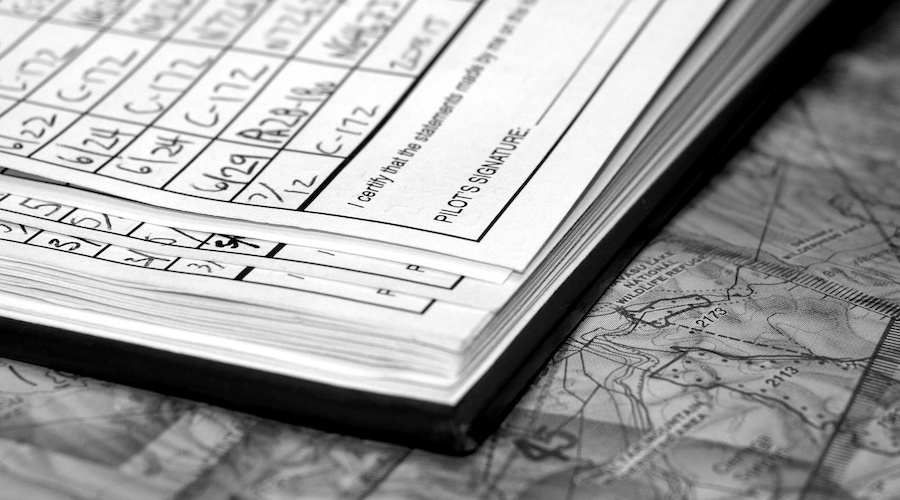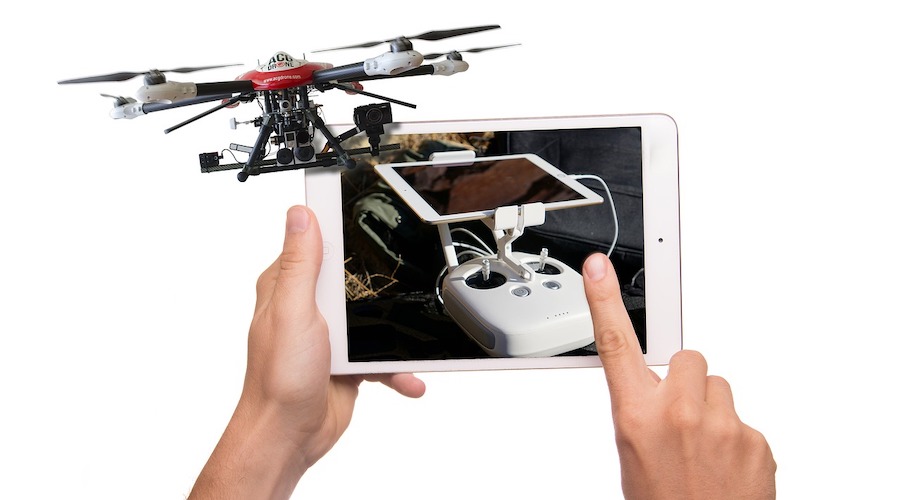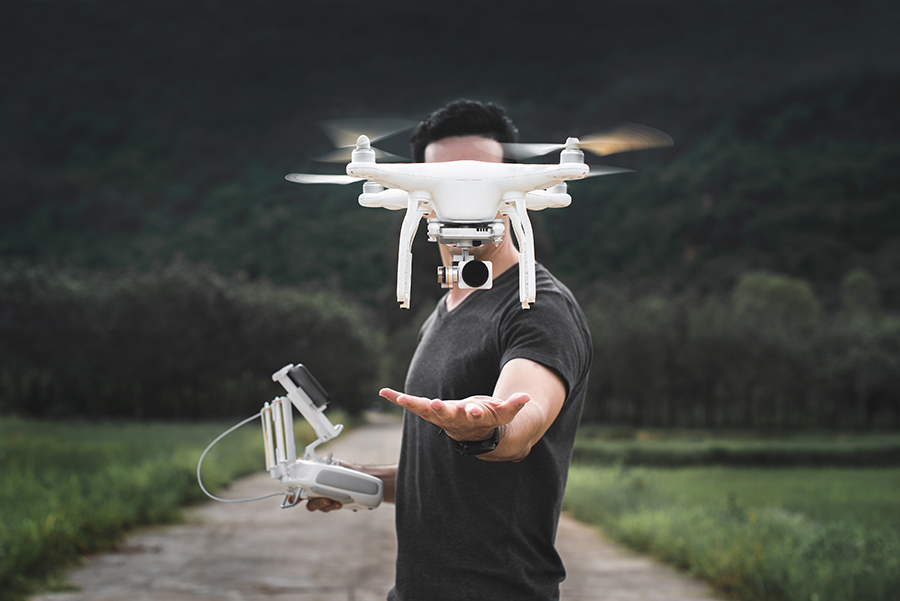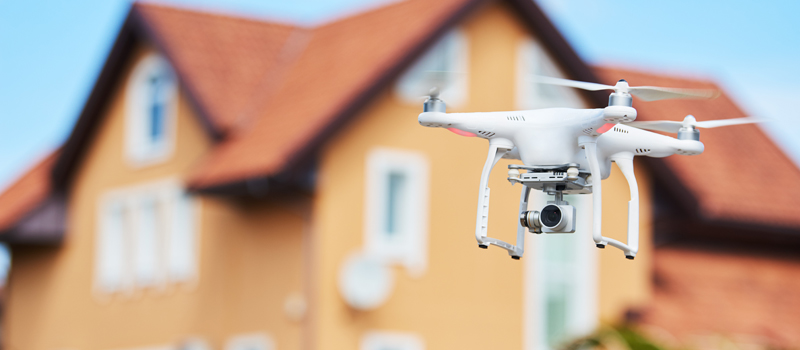-
What does the FAA say about drone flight logs?
-
Other benefits of drone flight logs
- May help you get clients
- Instrumental for Part 107 waiver requests
- May help you get cheaper insurance
-
Should your flight log be written or digital?
- Pen and paper
- Electronic or app-based
- Drone News Update
-
What to record in a drone flight log
- Date, time, and duration of flight
- Location
- Mission details
- Weather conditions
- Drone maintenance
- Drone inspection
-
Final thoughts
Pilots of manned aircraft are sticklers for logging the details of their flights. These come in handy for documentation of their flight hours and can be used as a tool for investigation if something untoward happens.
Since drone pilots can now be considered FAA-certified airmen, the FAA would ideally want to extend the value of flight logs to drone pilots. The recommendation somewhat makes sense, and numerous drone pilots have certainly benefitted from their diligence on keeping flight logs. What’s the proper way to keep drone flight logs and what are they good for anyway?
What does the FAA say about drone flight logs?
The first question in everybody’s mind is this – does the FAA require drone pilots to keep flight logs? The answer is no, even for drone pilots certified under Part 107.
However, the FAA very strongly recommends the practice of keeping drone flight logs for those who are flying under Part 107 rules. The FAA’s stand on this matter is summarized under Section 107.7:
“A remote pilot-in-command, owner, or person manipulating the flight controls of a small unmanned aircraft system must, upon request, make available to the administrator… (2) Any other document, record, or report required to be kept under the regulations of this chapter.”
Moreover, an addendum included under Advisory Circular 107-2 entitled Section 7.3.5 “Benefits of Recordkeeping” states:
“Recordkeeping of documented maintenance and inspection events reinforces owner/operator responsibilities for airworthiness through systematic condition for safe flight determinations. Maintenance and inspection recordkeeping provide retrievable empirical evidence of vital safety assessment data defining the condition of safety-critical systems and components supporting the decision to launch”.
“Recordkeeping of an sUAS may provide essential safety support for commercial operators that may experience rapidly accumulated flight operational hours/cycles. Methodical maintenance and inspection data collection can prove to be very helpful in the tracking of sUAS component service life, as well as systemic component, equipage, and structural failure events.”
While the text does not explicitly state that Part 107-certified drone pilots need to keep flight logs, the implication is that flight logs can be requested by the FAA. The text in the advisory circular lists down, in no uncertain terms, all the benefits that flight logging can provide to the drone pilot in terms of drone maintenance and safe operations.
Other benefits of drone flight logs
While it doesn’t take a lot of interpretation to deduce how the FAA feels about keeping drone flight logs, we also recognize that the recommendations of the FAA may not be enough to sway the opinion of some drone pilots. If you do any sort of professional drone operations, then flight logs can also be a tool for massively expanding the scope of your work. Here are just two ways in which this could happen:
May help you get clients
If there’s one thing that drone pilots can cite to justify high rates for their services, it’s their level of experience. A highly experienced drone pilot can easily command rates four to five times more expensive than a beginner. However, experience is tough to prove without documentation. This is where drone flight logs come in.
Drone flight logs can serve as tangible evidence of your hundreds of hours of total flight time. If you offer highly specialized services such as industrial inspection or mapping, then it’s even more important that you can offer documented evidence of the past jobs that you have done.
Instrumental for Part 107 waiver requests
Your experience plays a role in determining your chances of being granted a waiver under Part 107 rules. The waiver system is a privilege granted to licensed drone pilots that will allow them to fly under conditions that would normally be restricted. This is possible upon the request of the drone pilot and the approval of the FAA.
When assessing a waiver request, the FAA will look at the ability of the applicant to anticipate the potential risks of their operation and to come up with the appropriate mitigating measures. Naturally, the level of experience of the pilot also comes into play. For this reason, drone pilots are encouraged to include copies of their relevant flight experience through flight logs along with the waiver request.
May help you get cheaper insurance
If you do any sort of professional drone work, then you have probably signed up for some form of drone or liability insurance. This is simply a way for you to protect yourself from financial obligations that could be brought about by a drone-related accident. In a field as unpredictable as commercial drone operations, insurance is simply a way for you to not face financial ruin or lose your means of earning.
As with any insurance, the premiums of drone insurance are determined by the level of risk that you present. What this means is that an insurance provider is more likely to charge you a lower premium if they deem you to be less of a risk. In this regard, documented flight logs may help you convince an insurance provider that you’ve flown hundreds of hours and that you do your due diligence when it comes to maintenance and inspection.

Should your flight log be written or digital?
There are two schools of thought when it comes to keeping flight logs. More old-fashioned drone pilots prefer writing down their flight details in physical logbooks, while others prefer the convenience of an electronic or app-based flight log.
As far as the FAA is concerned, both methods are equally valid. More than the way in which the flight logs are kept, what is important is that they are updated regularly and contain all the relevant details. The choice of electronic versus pen and paper is simply a matter of personal taste. If you’re trying to pick between the two options, then here are some of the pros and cons of each alternative:
Pen and paper
Keeping flight logs using pen and paper is easy at first since you don’t need to become familiar with any app or system. You also won’t have to worry about data security or the risk of your data getting lost because of a failure of the device or cloud storage. Presenting your flight logs to the FAA or any authority is much simpler if you simply have to hand over a logbook.
The drawback of keeping drone flight logs on paper is that you have virtually no backup. If your logbook gets lost, then you could effectively lose years’ worth of drone flight logs. This is unless you painstakingly scan those documents to keep electronic copies of them, at which point it might be more practical to record the data electronically in the first place.
For some, just the mere thought of carrying around a logbook already sounds off-putting. Most people have gotten used to the experience of being able to do just about everything in their smartphones. If this sounds like you, then pen and paper might not be the best option.
Electronic or app-based
Through various drone flight apps, you can collect drone flight data directly to an electronic file. Most apps also store real-time cloud-based backup, so you never have to worry about your flight logs disappearing. If you want to view the data, you may have to export the files and open them using a dedicated flight logging software.
The biggest advantage of this approach is convenience. You rarely have to manually input any data when it is collected digitally – your drone flight app will collect the data automatically as you fly.
These electronic flight logs include telemetry data like altitude, speed, and the location at a level of granularity that would have been unachievable with manual logging methods. This richness of data is hard to simulate. With flight logging software, you can view a map of your flight path, the time-based drop of battery levels, and the status of sensors at prescribed intervals. If you like doing advanced analytics of your flight data, then this will certainly appeal to you.
However, electronic flight logging is not for those who are concerned about data security. As with anything stored in the cloud, you can never be sure about the privacy or security of your data. You also need to consider the cost, as such services typically require a recurring subscription fee.
There’s also the matter of learning how to work with the app or software for flight logging. This shouldn’t be a huge challenge if you’re tech-savvy enough.
What to record in a drone flight log
For some people, the most intimidating aspect of keeping a drone flight log is in determining which information you should record. It’s really not all the complicated and something you can learn with a bit of practice. Here’s a quick list to get you started.
Date, time, and duration of flight
As you would expect, each flight log should start with date and time data. The time in question should ideally coincide with the moment that the drone takes off. If you use a flight logging app, then this information should be automatically recorded.
Just as important as logging the take-off time is recording the time that your flight operation has ended. This allows you to log your actual flight hours, eventually accumulating an impressive flight record. If you’re flying a drone at nighttime, then it’s even more important to record these hours, as you can use the experience in applying for a night waiver.
Location
Directly next to the time and date should be the location of your operations. A set of coordinates for your take-off point will do, but it would be much better to define an extent using an enclosed area. This has become extremely important nowadays with the FAA becoming stricter about flying in controlled or restricted airspace.
If you’re using a flight logging app, then the app should be able to detect the position of the drone in real-time. This will allow you to view an actual flight path, which is as accurate as you can get when it comes to flight location. If you are logging this manually, don’t forget to also indicate the maximum altitude that your drone has achieved or that you have arbitrarily set for the mission.
Under this section, you may also add a few more details about your location. If you’re flying near a skyscraper or several tall obstacles, you may indicate those as potential hazards. A nearby body of water or crowd present would also be good details to include.
Mission details
Just as important as the date, time, and location are the particulars of your operation. What is the purpose of your drone flight mission? Are you flying recreationally or under Part 107 rules? Defining these parameters before take-off is very important as there are different sets of rules for recreational and commercial drone flight. The FAA also states that the purpose of a drone operation must be established at take-off.
Filed under this category as well is the make and model of the drone you are using. If you are using multiple drones, this is a good way to keep track of how many hours you’ve spent flying a particular model. Not only is this useful in terms of maintenance, but you can also document how much experience you’ve had flying commercial-grade drones like the DJI inspire 2 or the Mavic 2 Pro.
Weather conditions
Weather is something that a drone pilot must always be concerned with. Unlike manned aircraft, drones have practically no ability to withstand windy conditions or even the slightest bit of rain. Taking note of weather conditions is a good practice for situational awareness while also providing documentation should something untoward happen.
It’s usually enough to note weather conditions based on visual indicators but it would be even better to write down actual weather reports and forecasts. In the aviation industry, these are broadcasted by air traffic facilities as METARs and TAFs. These are highly abbreviated reports and may take some work to interpret but scanning for METARs and TAFs is nonetheless a very good practice.
Drone maintenance
One of the primary objectives of flight logging is to help drone pilots stay on top of their drones’ maintenance requirements. Maintenance activities like calibration of sensors and replacement of parts need to be done periodically to make sure that your drone is always in tip-top condition. Keeping track of these is difficult without writing them down, thus the need to include them in your drone flight logs.
A documented maintenance plan is also a great way to show insurance providers and potential clients that you always take care of your drone and can reliably get jobs done. Keep in mind that nobody will want to work with a drone pilot who takes unnecessary risks.
Drone inspection
A drone pilot is expected to inspect their drones every single time before they take off. This is the last line of defense against damaged parts, cracked propellers, loose batteries, or uncalibrated sensors. To make your pre-flight inspection thorough and systematic, a good idea would be to prepare a checklist that you will go through every time you fly. This can be integrated into your drone flight log, whether in written or digital form.
Final thoughts
For those who are only flying drones for fun, keeping a drone flight log might seem like an “overkill” measure. However, pilots who fly commercially have probably used their flight logs several times already for some very good reasons. Not only are they a tool for enhancing the overall safety of drone operations, but they can also help in securing potential clients or better insurance premiums.
It’s true that keeping drone flight logs add to the list of things that a drone pilot must do. Between scanning for TFRs, asking airspace authorization, and checking the relevant METAR, the stricter standards set by the FAA have made drone flight a lot more work-intensive than ever. Ultimately, any amount of effort is worth it if it means keeping the national airspace safe.





